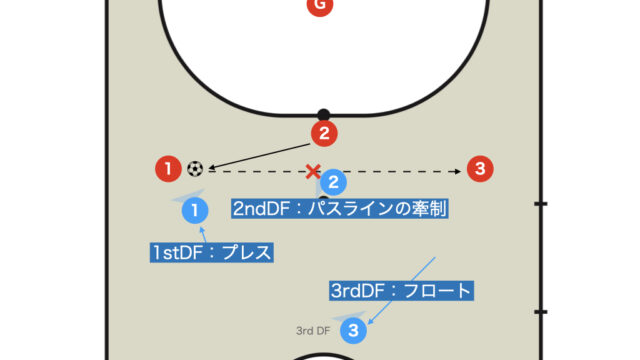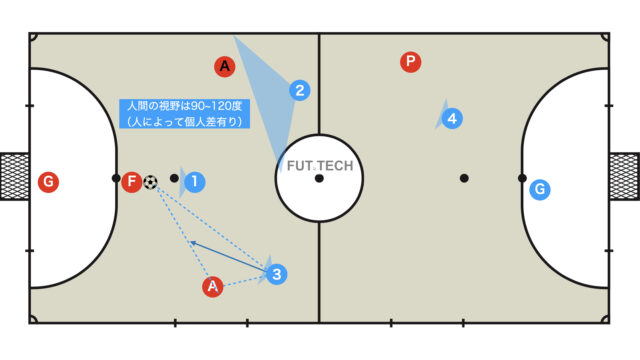In half defence, there is a well-known and orthodox formation (tactic) known as the rotating square.
This tactic is extremely effective, as it allows even teams with lower individual ability to create local numerical superiority and gain an advantage.
This article provides a thorough explanation of half defence using the rotating square, making it easy to understand even for futsal beginners.
Principles of Half Defence
Setting the Press Line
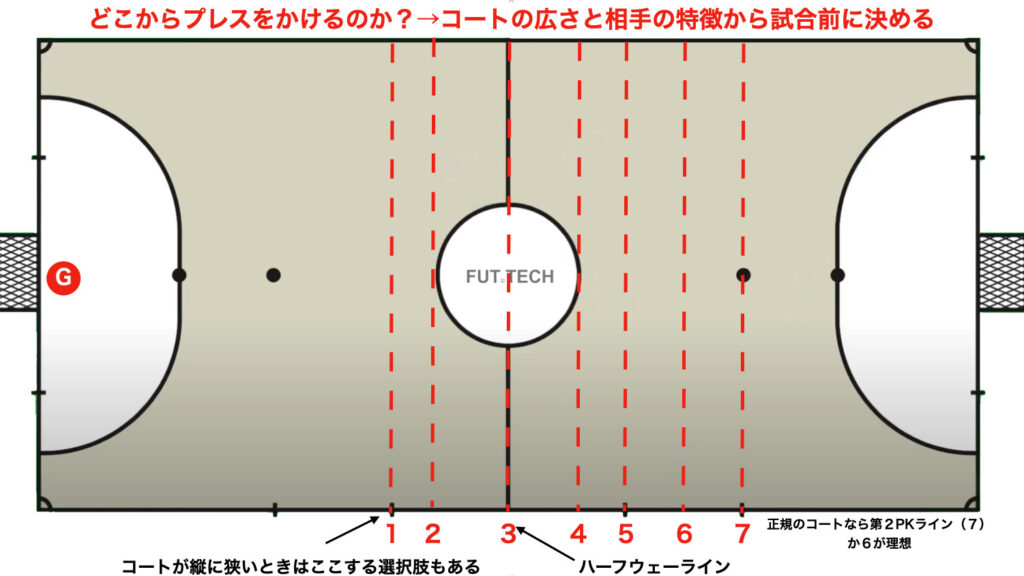
The press line is set not only based on tactical factors such as the size of the court and the opponent’s characteristics, but also using markers that are easy for players to recognize during the match.
- Substitution zone marker
- Edge of the center circle
- Half-way line
- Second penalty kick line
- Original (other)
Because it is called half defence, the half-way line is often set as the press line.
The higher the press line, the further it is from the goal, thereby reducing the opponent’s shooting options; however, this can also lead to a less compact defence. Finding a well-balanced position is key.
Do Not Press Until the Ball Crosses the Set Press Line
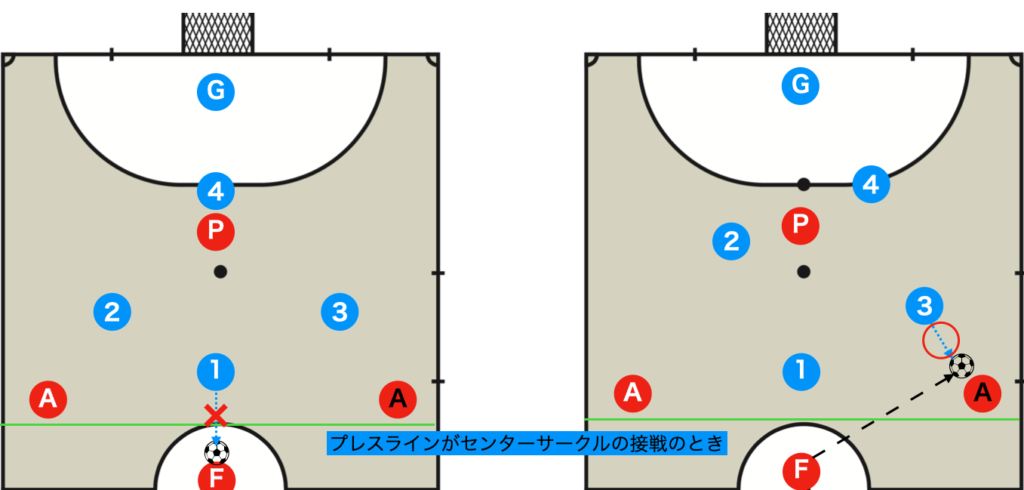
When It Is Acceptable to Press Beyond the Press Line
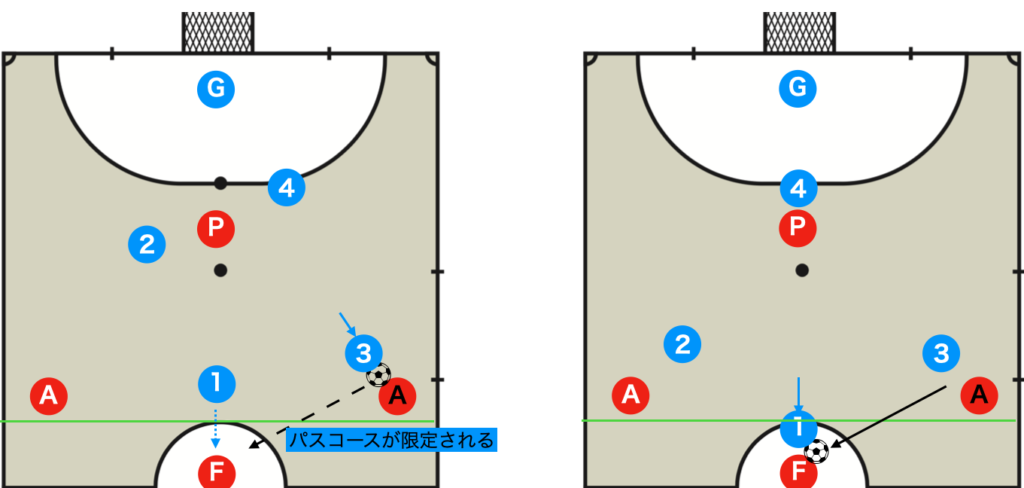
If the 1st DF is able to press the ball holder strongly, the passing lanes become limited, so the second defender may join to cover the remaining passing lanes.
In such cases, since the aim is to completely dispossess the opponent, the press line is disregarded.
Advantages
- The close proximity among defenders creates a compact defensive organization, making it easier to cover.
- It reduces the space available for the opponent.
- It provides ample space for counterattacks.
Disadvantages
- Being closer to the goal can offer the opponent more shooting options.
- After dispossessing the opponent, the team is farther from the goal.
When the fixo Has the Ball
Establishing Multiple Lines
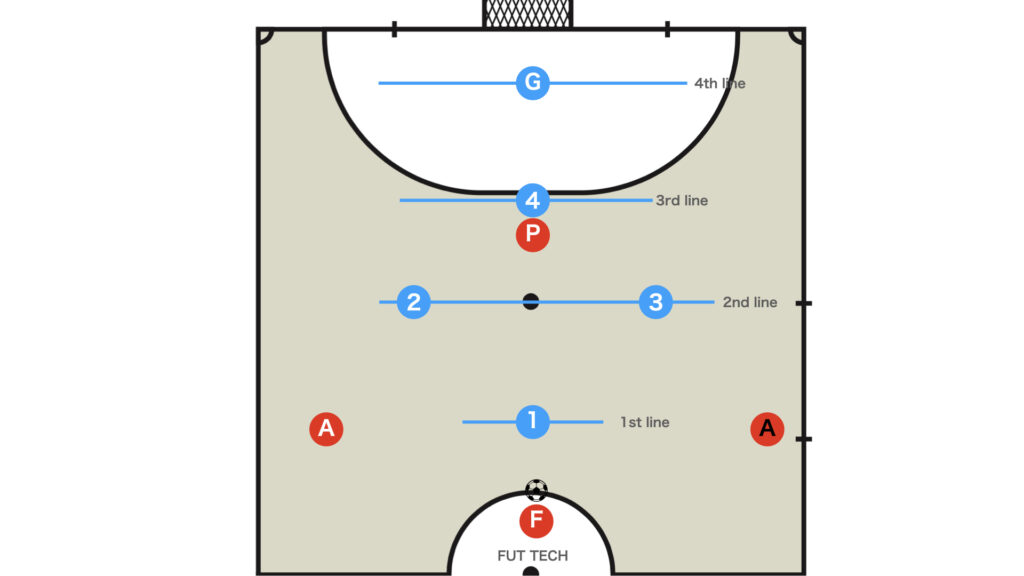
Construct four distinct lines, including the goalkeeper.
- 1st line: Blue No.1
- 2nd line: Blue No.2 – Blue No.3
- 3rd line: Blue No.4
- 4th line: Goalkeeper
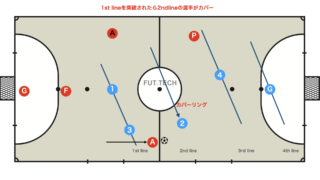
Closing the Passing Lane to the pivo
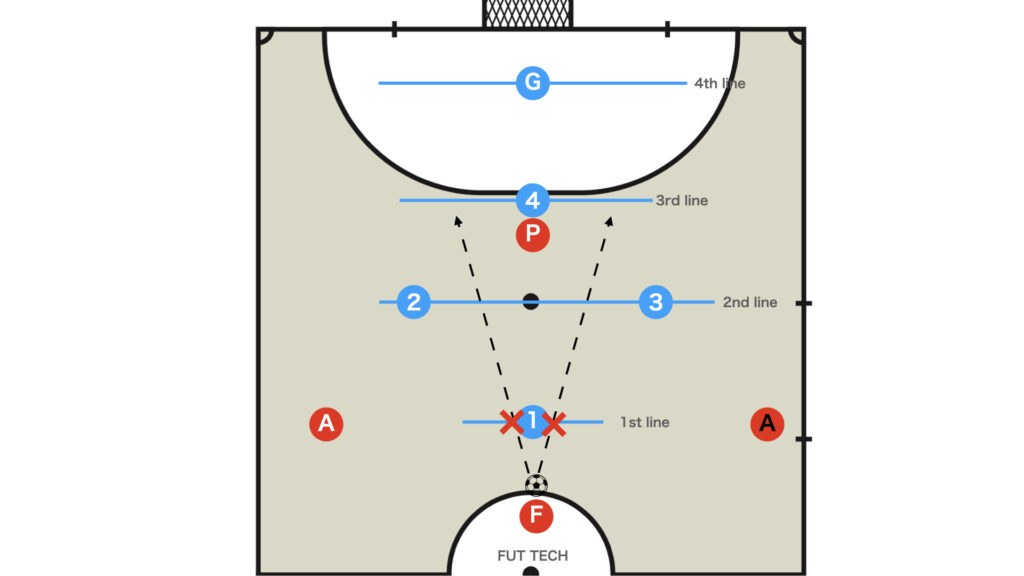
The 1st and 2nd lines work together to cut off the passing lane to the pivo.
If Blue No.1 is not effectively closing the lane, the 2nd line will tighten up to restrict any remaining passing options.
Maintaining a Compact Square

In every situation, always be mindful of the spacing between players and maintain a compact square.
This ensures that there is adequate cover in case an opponent is dribbled past.
Anticipation and Decision-making
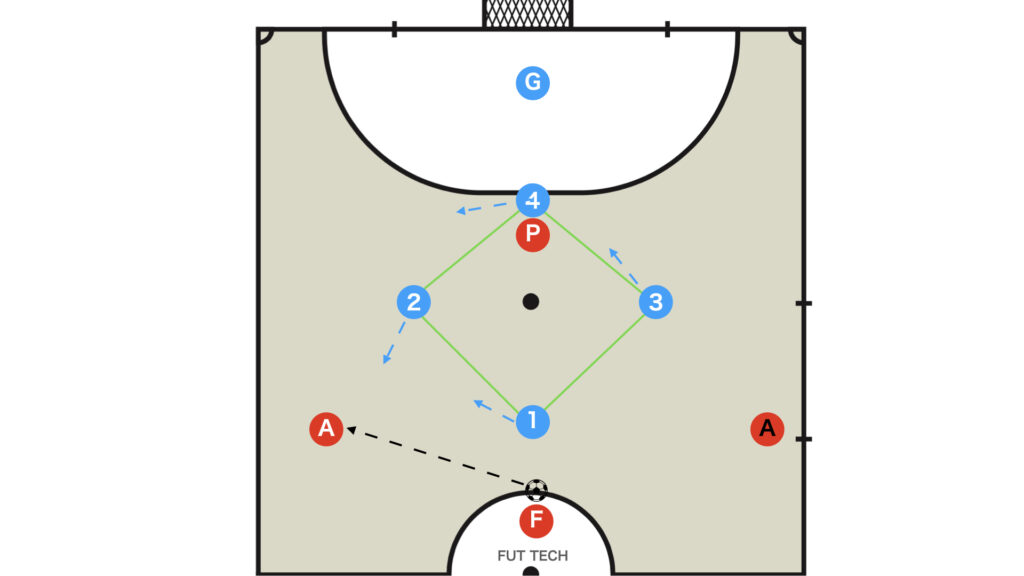
Defenders should focus on the ball holder’s gaze and movements, as well as the actions of their teammates, and immediately start moving as soon as the ball is played, anticipating where it will go next.
When the Ball Is Played to the ala (When the ala Has the Ball)
Maintaining a Compact Square
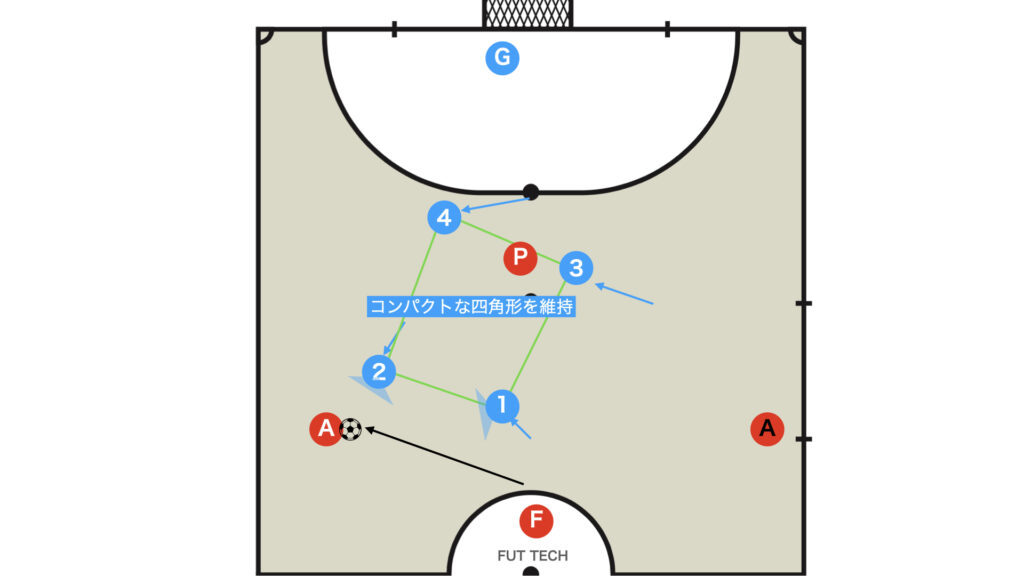
Just as when the fixo has the ball, continue to maintain a compact square.
Restricting the Passing Lanes
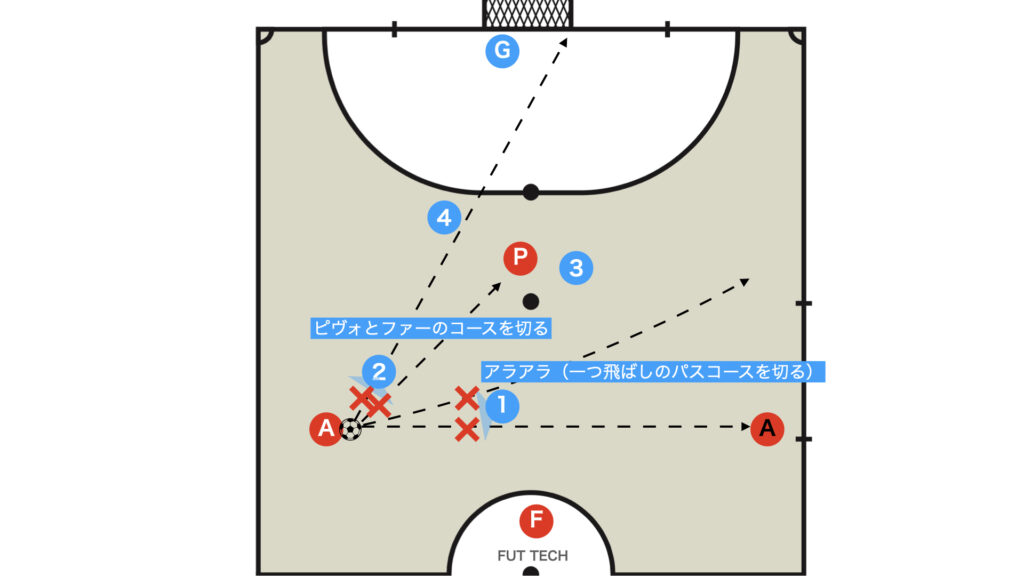
- 1st DF (Blue No.2): Primarily cut off the passing lane to the segundo (with the goalkeeper protecting the near post).
- 2nd DF (Blue No.1): Cut off the passing lane to the ala-ala (skipping one).
Dealing with Dribbles
Cut-in
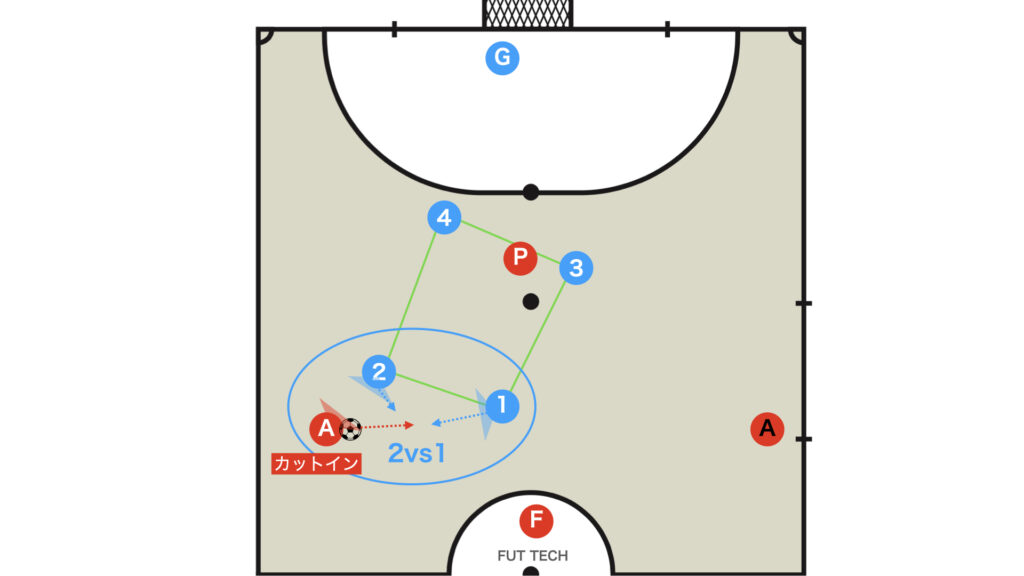
If an opponent cuts in, Blue No.1 and Blue No.2 should work together to defend (2 vs 1).
If the cut-in becomes significant, a double team should be employed to win the ball back.
Vertical Breakthrough

If an opponent appears likely to break through vertically with a dribble, defenders should anticipate and rotate in unison.
Blue No.2 and Blue No.4 work together to counter the vertical breakthrough, creating a numerical advantage (2 vs 1) as before.
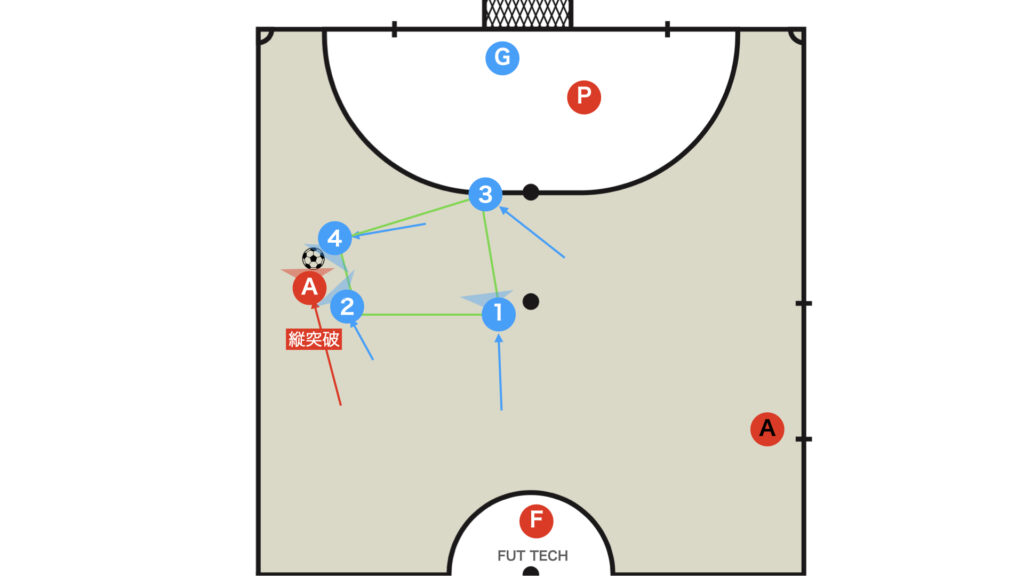
Even if the defensive organization begins to unravel, always maintain a compact square.
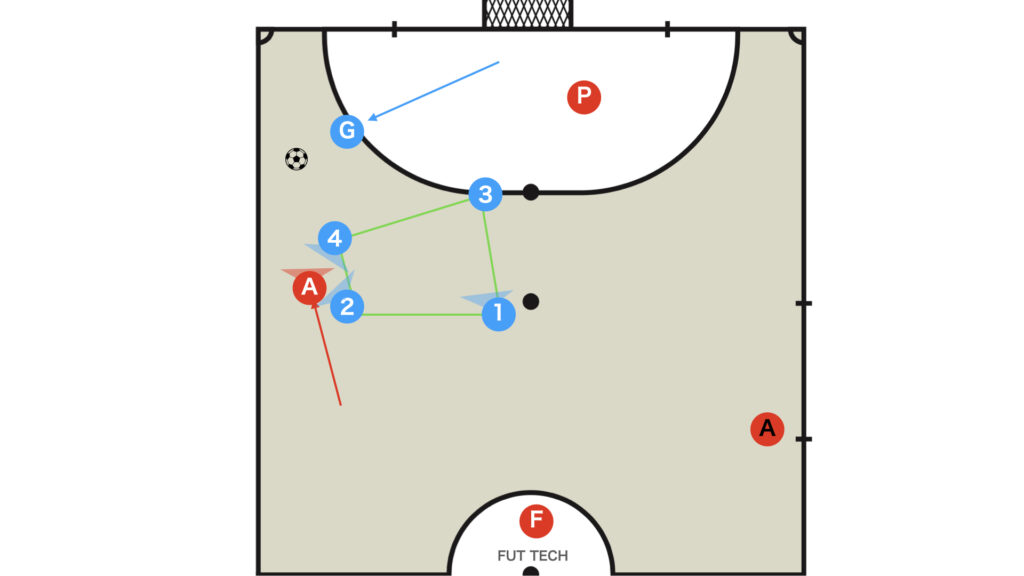
If the opponent’s dribble becomes too threatening, the goalkeeper may step out (although the goalkeeper’s body orientation allows for better judgment, this does come with the drawback of leaving the goal exposed).
It is advisable for the team to agree on this in advance.
Vertical Pass to the pivo
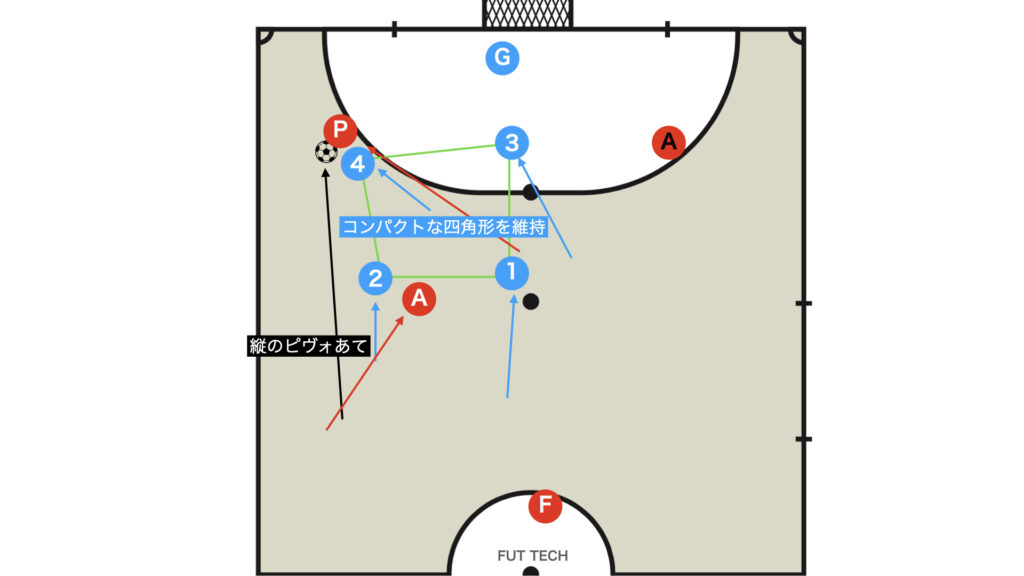
If the opponent’s pivo drifts toward the corner and receives a vertical pass, Blue No.4 should respond as with the vertical breakthrough, while the other defenders coordinate.
Passing to the pivo from a Cut-in
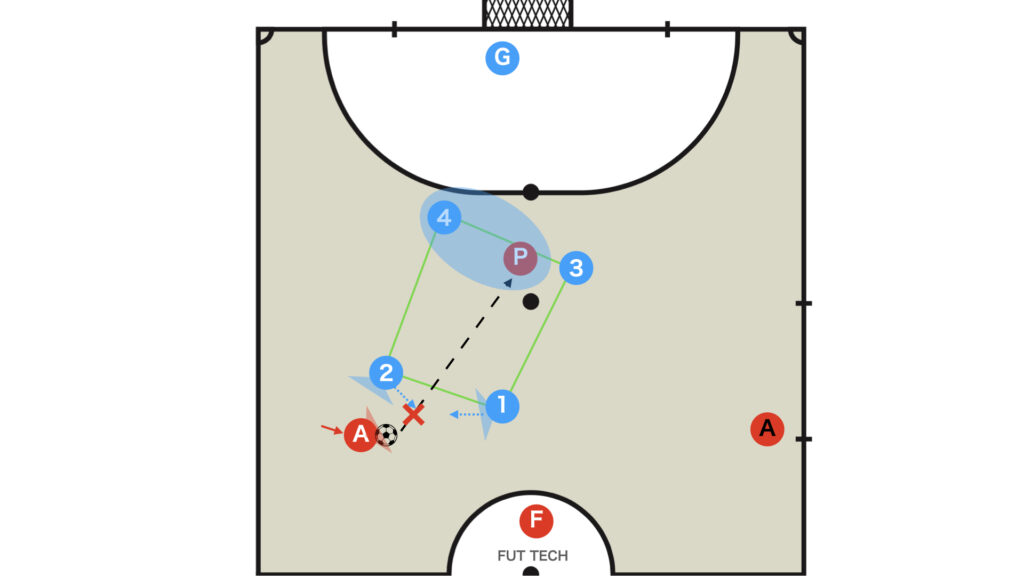
For passes to the pivo from a cut-in using an ankle pass, Blue No.1 and Blue No.2 should, as much as possible, shut it down.

If the pass reaches the pivo, Blue No.4 should press.
In this situation, Blue No.1 and Blue No.2 should retreat to the ball line while keeping an eye on their individual marks, and, if possible, surround and dispossess the opponent.
Poor Response: Blue No.3 Goes to the pivo
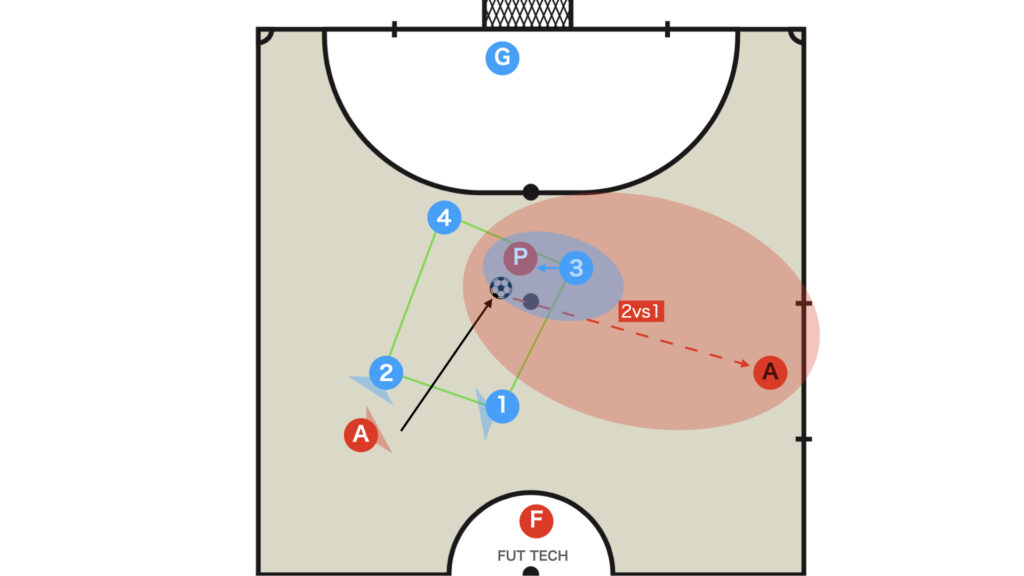
If Blue No.3 marks the pivo, it leaves the opposite-side ala unguarded, which is not a good response.
When the Opponent Breaks Through
Paralela
If You Prefer Not to Switch Marks on the pivo: Man-to-Man Marking

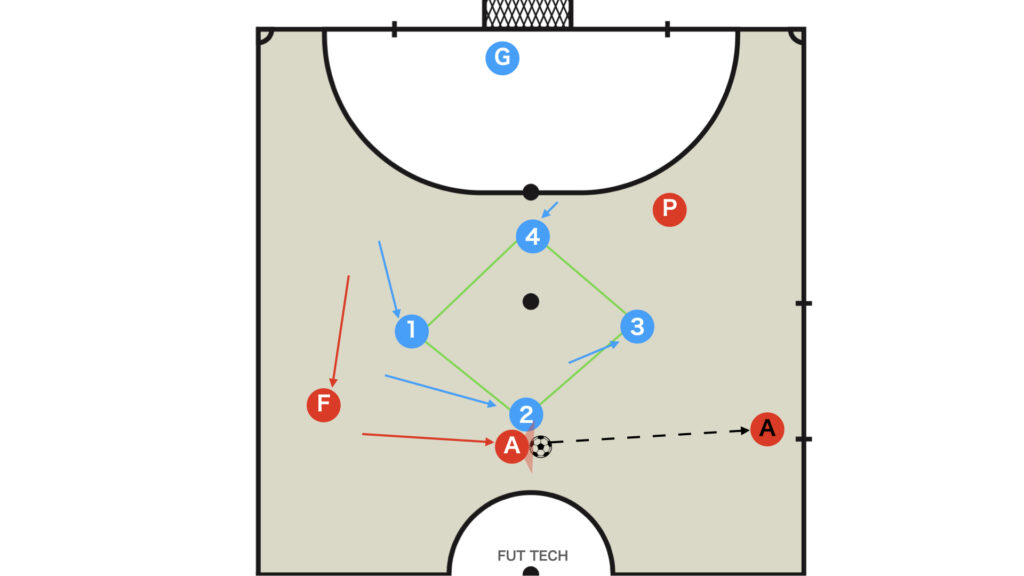
When the opponent recovers floor balance with a central dribble, the formation returns to its original state.
If Not Particular About Individual Marking: Rotate in Defence
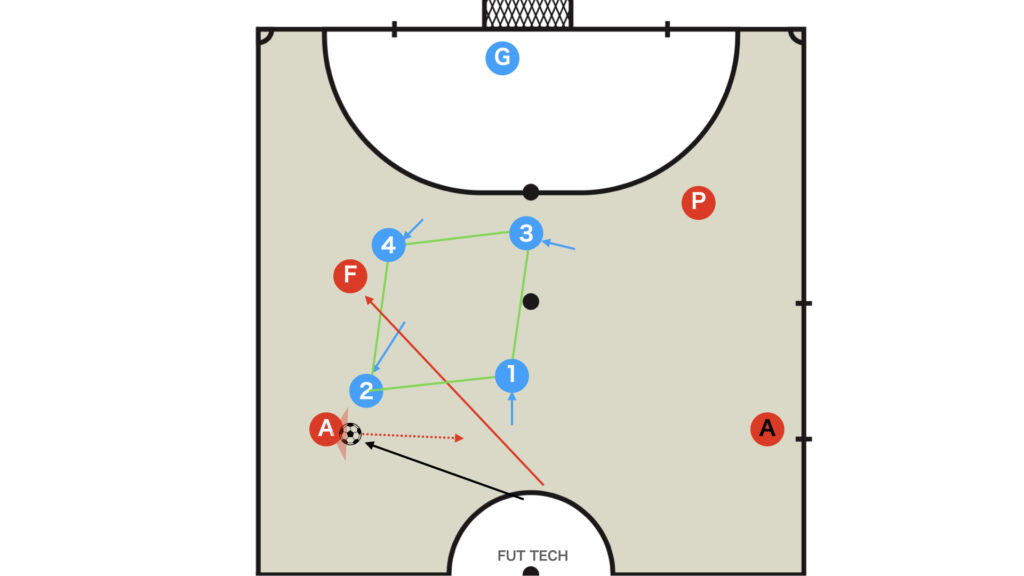
Although switching marks on the pivo has its drawbacks, employing paralela reduces the risk of conceding space.
If the 1st DF Is Pressing: Double Team
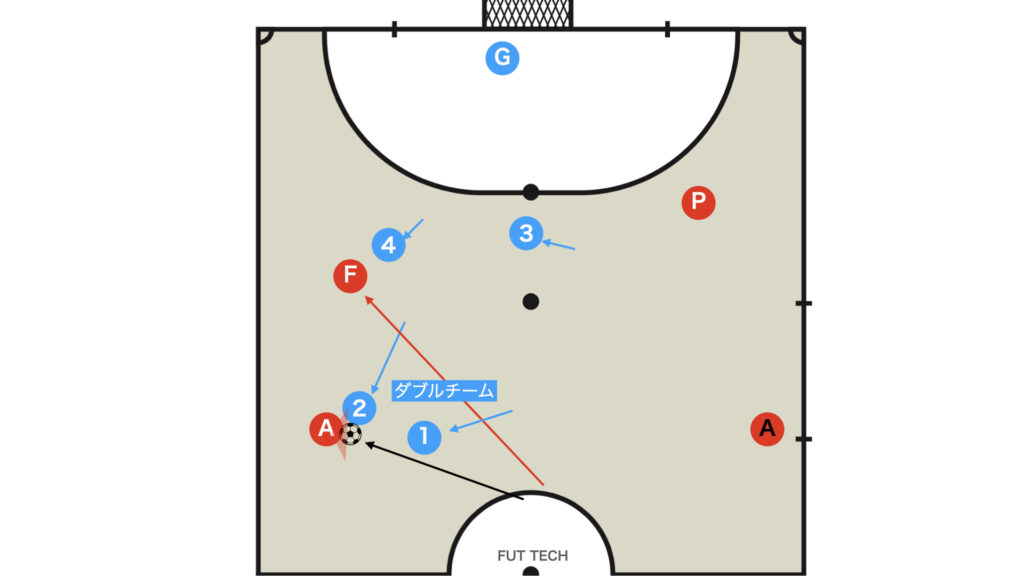
If the 1st DF is pressing, they can go for the ball with a double team without worrying about individual marking.
If the ball is won here, it can quickly turn into a favorable counterattack situation.
Diagonal
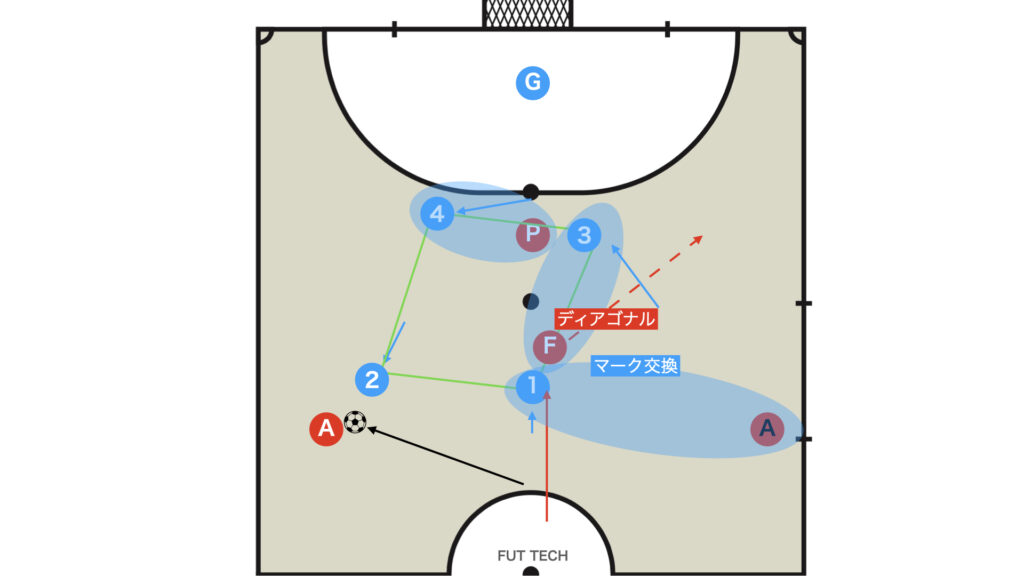
When the opponent breaks through diagonally, Blue No.1 and Blue No.3 should swap marks to maintain the square.
(The marking responsibility is indicated in light blue.)
Summary
The rotating square half defence emphasizes always maintaining a compact square, making it highly effective on narrow courts (18m or less).
When the team shares a common understanding, their defensive capabilities can be significantly enhanced; therefore, teams reviewing their defence should consider this tactic first.

Thank you very much for reading this article to the end.
If you found this article useful, please consider sharing it using the social media share buttons above.
We regularly share valuable insights on futsal tactics on Twitter, so if you haven’t followed us yet, we’d appreciate your support!
We are committed to raising the level of futsal in Japan by sharing high-quality information through discussions with individuals who have coaching experience in the F.League and overseas.
If you have any questions or notice any mistakes, feel free to leave a comment below.
We update our articles regularly, so if you’d like to keep reading, please bookmark our site or search for “FutTech”!

